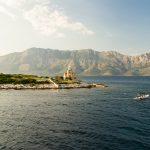As Morski writes on the 27th of November, 2019, organised by the Scientific Council for Nature Conservation of the Croatian Academy of Sciences and Arts, a roundtable was held on plastic in the Adriatic sea and the sea’s vulnerability to plastic pollution.
”There are two goals; by 2030, 50 percent of plastic waste in Europe must be recycled and 100 percent of recyclable packaging must be on the market. The plastics industry is looking forward to EU regulation because it is stigmatised and doesn’t want plastic to end up in the environment. Plastic production should be sustainable and then be used in an accountable manner. What can’t be recycled can be used as a secondary raw material or energy,” said Gordana Pehnec Pavlović of the Croatian Chamber of Commerce (HGK).
A professor from the Geotechnical Faculty in Zagreb, Aleksandra Anić Vučinić, said that about 80 percent of offshore waste originates from the land, as some countries don’t have a comprehensive waste collection system.
”We’ll never collect all of the existing plastic from the ocean because it’s an enormous amount, but we must work to ensure that we don’t pollute it in the future. The biggest problem is the lack of data comparison standards, so we have different estimates for the Adriatic sea – there are about 23,000 tons of plastic in the sea, or 5 to 30,000 tons, and some estimates range from 760 tons to 5,000 tons,” said Anic Vucinic, emphasising that it isn’t the material that is to blame but the people who use it, and that it’s necessary to change people’s habits in the long run.
A professor from the Velika Gorica Polytechnic, Sanja Kalambura, gave a presentation on the levels of plastic in the Adriatic sea and its overall cleanliness.
”We’re increasingly interested in the topic of waste, especially when we connect it to an ecosystem like the Adriatic sea. It’s high time we opened that issue up and started talking about systematic problem solving. Polymers surround us, we can’t imagine life without them, but the question is why they end up in the environment. We need to find a solution at the national level, even though waste knows no borders, and the EU has recognised that.”
Vlado Cuculić from the Institution for Marine and Environmental Research at the Ruđer Bošković Institute emphasised that we lacked critical thinking.
”We can’t ban plastic, but we do have to offer other solutions. Most of the eight million tonnes of plastic that end up in the oceans a year comes from China, where Europe has moved its heavy production,” he said.
Ecotechnologist Robert Kakarigi stressed that the problem should be viewed from multiple angles, and the approach to it all should be systemic, from both an economic and an environmental standpoint.
”The Adriatic sea is shallow and most microplastics are in sediments, not on the coast. This is where organisms that purify the sea live, and now they’re filtering microplastics that are full of additives and absorb environmental toxins from the environment. About 650 organisms are already feeding on microplastics,” Kakarigi said.
Make sure to follow our dedicated lifestyle page for much more. If you’re interested in plastic in the Adriatic sea and the official and unofficial ways Croatia works to protect its environment, give Total Eco Croatia a follow.








